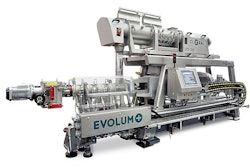
Marketing and feed additives have had a good 20 years in the animal nutrition industry. The advent of additives on a massive scale coincided with the need to replace antibiotics in feeds, and this created an unprecedented bonanza. Marketing found a virgin industry and a new class of products along with a great need for change. We enjoyed the influx of information and the professional approach to our industry, which has not always been considered as being among the most sophisticated. Feeding animals has never been highlighted with such illustrious terms. All in all, marketing has improved the image of our industry and helped us become a real industry instead of a backyard agricultural vocation.
The need for marketing
Of course, there have been many embarrassing attempts, mostly the result of lack of vision by those who remain convinced that marketing is the realm of sales or technical departments. Lamentably, when marketing is leveled with sales or technical support, then results range from amusing to disastrous. Luckily, such misunderstood attempts have not tarnished the image of the animal nutrition industry, at least in the eyes of our customers, the consumers of our products. All they have managed to do was to blemish the image of a particular business in the eyes of animal producers. We need to work harder to educate ourselves about the need for marketing and the need to define who is responsible to manage marketing, but that is another story.
If we must find a blemish to the whole issue of marketing, a major failure is that of over-promising and under-delivering, which is always the opposite of what we should aim for as professionals. Perhaps we were enthused by the new tools and methods, or we just fell victims of the internet age where information is no longer as meticulously screened as it used to be with the printed world. Or it could have been the need to procure results in an era where business integration has become the norm and employees are often valued by their budgetary performance. Whatever the excuse or fault, and I am sure there are many, we failed to stay true to ourselves. As an industry, we over-promised and under-delivered.
The latest trend
Animal producers do not always have the scientific or technical background to thoroughly investigate each product or service in the market. In many aspects, they are no different than the average consumer, and for that matter, advertisement has played a greater part in deciding than science or even common sense. In fact, even scientists responsible for making buying decisions on behalf of animal producers have also fallen in the trap of following the crowd and the latest trend. Keeping a cool head against the current is never an easy proposition and entails losing false credibility, especially today where employment is short-lived and ever-changing. Quite often, the need to appear sophisticated and informed has forced us to adopt the latest trend without much thought on its scientific background.
The problem with modern education
I must also bring to attention the problem with modern education at the highest level, and I will be as blatant, as always. Universities have been forced to seek funding from the public sector, and quite often this has not worked as anticipated. As a result of losing their public funding they have also lost also their independence and everything that comes with it. The narrow modern focus on certain products may have brought new insights into our science, but has narrowed the field of research and extension. Thus, new scientists lack the basic broad aspects of knowledge required to face common but largely unprofitable (for us) problems. I am skeptical about the direction new university professors coming out of such a system will take and whether this will further reduce the overall breath of scientific expertise in next generations.
Regaining the balance
In the next twenty years that I plan on being active in this industry, we must regain the balance between science and marketing. Of course, we must not lose the importance of having marketing on our side. In fact, we must refine, expand and strengthen our marketing tools. But we must also refocus once more on the science part of our industry. We must redouble our efforts to broaden our reach, and for that we need to rethink the way our educational and research institutions are funded. In my opinion, public research must remain publicly funded, whereas private research should be funded by private funds; a way should be found so these two cooperate for the common good of our science, our animals, our producers and ultimately the consumers of our products.
Marketing should be given its proper place in our industry.
In less dramatic tones, marketing should come under the control of reality in that claims and promises should be toned down — without sacrificing the need for dramatization to draw attention, but for that we have the advertisements. Marketing should refocus on the main goal of our industry, which is nothing else but how to make animal producers profitable and provide our consumers wholesome and safe products at reasonable prices. As it happens now, marketing and sales are quite separate entities, and in some large companies, marketing and technical departments are not on speaking terms. This should change, too.
All in all, marketing should be given its proper place in our industry, and that is between management, production, sales and technical support — all in a harmony that surprises our customers by under-promising and over-delivering, the way it had been twenty years ago.















